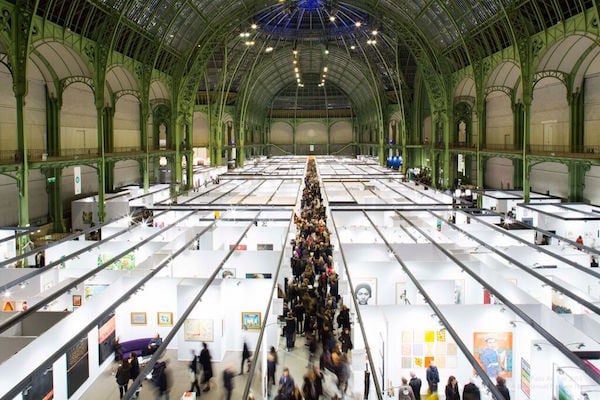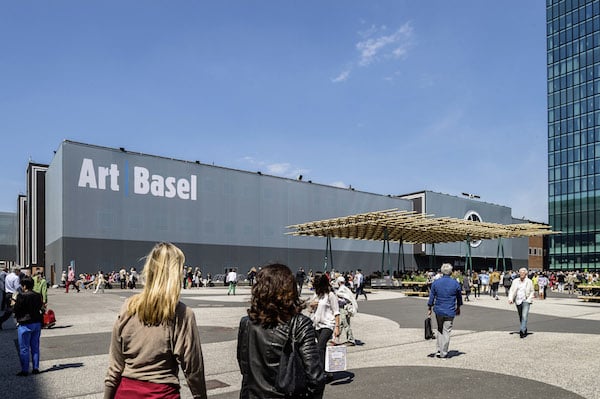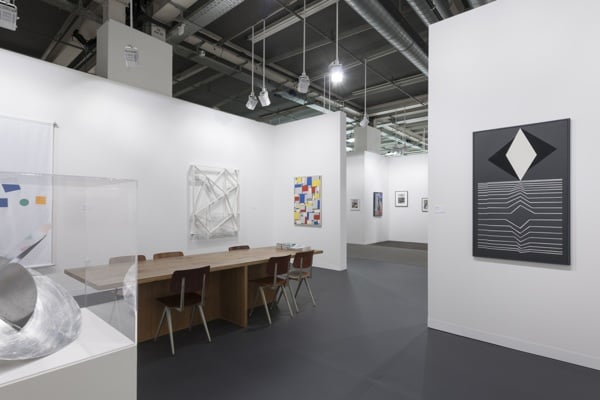
Photo: Courtesy Art Paris.

Art Basel in Basel 2015. © Art Basel. Courtesy of Art Basel.
A committee of gallery owners appointed by fair organizers are tasked with deciding which of their fellow gallerists are permitted to attend. In the case of Art Basel—the largest and most prestigious fair in the world—six people decide the fate of hundreds of galleries.
Competition to get into the top art fairs is fierce; at this year’s edition of Art Basel, 287 participants were admitted from over 900 applicants. And at this year’s 47th edition, 95,000 visitors traveled to the Swiss city of Basel to attend the festivities. According to the New York Times, the insurance company AXA estimates that $3 billion worth of art is on offer at the fair.

The
Swedish Berlin-based gallerist Claes Nordenhake was on the Art Basel
selection committee for nine years. Photo: Talking Galleris via
Facebook.
According to the Financial Times, some galleries make up to 70 percent of their annual turnovers at art fairs, so being left out of the loop can seriously harm a gallery’s finances. It can also damage a gallery’s reputation among artists, collectors, and fellow gallerists. But what is the criteria for admission?
“There is no set criteria,” he said. “Rather, it’s a general feeling that this gallery, or the the artists represented by this gallery are very interesting. The galleries have to come from different parts of the world and they have to be exhibiting galleries, not just art dealers. The criteria is a feeling that it represents something of interest, and four of the six committee members have to agree,” he explained.

Powerful
selection committees decide which galleries are admitted to art fairs.
Photo by Andreas Zimmermann. Image: Courtesy of von Bartha Gallery.
Berlin gallerist Gerd “Harry” Lybke of Eigen+Art publicly accused Art Basel selection committee of collusion in 2011 when three prominent Berlin galleries, including his own, were excluded from the fair, according to a recent New York Times article. He claimed they were deliberately left out by competitors on the committee.
Nordenhake, however, strongly disagrees with this sentiment, “Competition is not a factor in the committee’s work. It is a point that could be very difficult, but in my nine years it really wasn’t a significant factor,” he insists. “It was almost idealistic, more so than I expected. The outside world always thinks that one protects oneself and excludes competitors, but in my experience it wasn’t like that at all, the opposite was the case. It was very honorable; I was astounded.”
Follow artnet News on Facebook.
Share

No comments:
Post a Comment